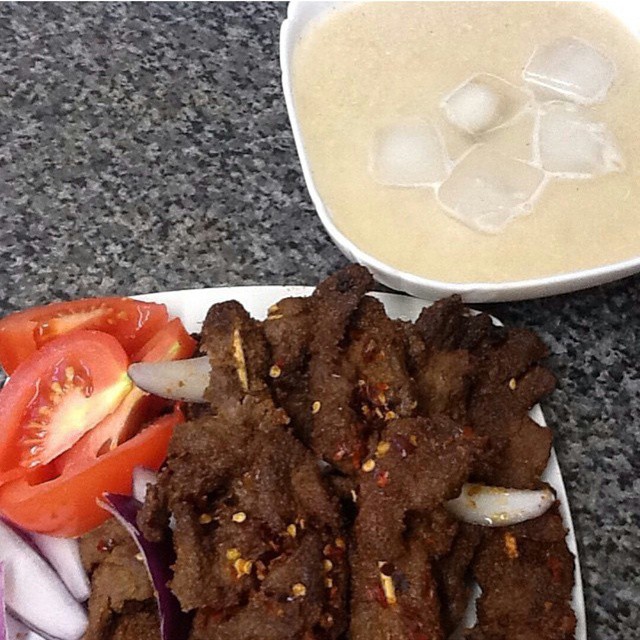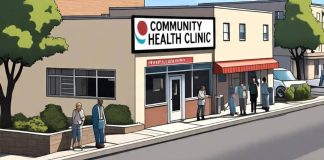You just found out that you and your partner both have the AS genotype, can you still get married and have healthy kids? Read this article to find out-
AS and AS genotype marriage
As opposed to popular opinion that AS and AS genotype couples should never marry as it is impossible for them to predict the genotype of their child, medical advancements have made it possible for that to become a thing of the past.
AS and AS genotype couples can now safely marry and give birth to all AA genotype kids if they want.
It is important to note that some of these processes are quite expensive and unaffordable for some people. It could also be emotionally and physically draining both for the woman who gets to undergo a cycle of procedures and for the couple as a unit.
This should be brought into consideration before venturing into an AS and AS genotype marriage.
But what if you and your partner are financially, physically and emotionally ready? What are the available procedures by which you can safely deliver healthy children?
Preimplantation genetic diagnosis (PGD) + In-vitro fertilisation (IVF)
Preimplantation genetic diagnosis (PGD) is a medical procedure usually carried out in a laboratory in conjunction with in vitro fertilisation with the aim of reducing the risk of passing on inheritable conditions.
PGD + IVF can be used to prevent the passing on of common single-gene mutations such as sickle cell anaemia and cystic fibrosis.
PGD works in conjunction with IVF, where multiple eggs are allowed to mature at once and retrieved. They are then fertilized with a single sperm cell each. The resulting fertilized eggs are grown in the lab up until the third day of development where they would be tested for sickle cell anemia.
The fertilised eggs that do not have the sickle cell gene would then be transferred to the woman’s womb on the fifth day of development.
Pros
- This process has close to 100 percent reliability and almost completely reduces the chances of giving birth to a child with the sickle cell genotype.
- It also makes it possible to select healthy embryos to be implanted in the future.
- When compared with amniocentesis and chorionic villus sampling, it is highly advantageous as only healthy embryo will be implanted and there is no need for pregnancy termination at any point;
Cons
- It is an expensive procedure. IVF costs in Nigeria could run up to about 1 million naira while the cost of PGD could be up to about 4 million naira.
- IVF procedure could be painful and emotionally draining, the process of hormonal stimulation and egg retrieval could be painful for some women and if unsuccessful, having to repeat the procedure could take an emotional toll on the couple
- As with many other medical procedures, PGD is not absolute and the risk of all fertilised embryos having the genetic disease still exists.
Amniocentesis
The amniotic sac contains amniotic fluid in which the unborn foetus grows during pregnancy. Amniocentesis is a medical procedure that is done whereby a thin needle is used to remove a small amount of amniotic fluid from the amniotic sac.
This fluid is then tested in the laboratory to determine if the foetus has any genetic disease such as sickle cell anaemia. It is usually carried out between the 15th and 20th week of pregnancy.
Pros
- It is cheaper when compared with PGD + IVF
- Natural conception is carried out and there is no need for IVF
Cons
- There is a greater risk of miscarriage
- Uncertainty and emotional toll of having to abort the baby if found to have sickle cell anaemia.
Chorionic villus sampling (CVS)
CVS is performed earlier during pregnancy than amniocentesis. It is usually carried out between the 10th and 13th week of pregnancy. It involves taking a small part of the placenta from where it is attached to the wall of the uterus.
After the samples are taken, they are tested in the laboratory and results are usually available between 7 to 10 days.
Pros
- Since it is carried out earlier in pregnancy than amniocentesis, termination of pregnancy in case of foetus with the genetic disease is safer
- It is cheaper when compared to PCG + IVF
- Natural conception is also carried out hence no need for IVF
Cons
- The risks of miscarriage are greater than in amniocentesis
- Uncertainty and emotional toll of having to abort the baby if found to have sickle cell anemia.
Other choices to explore:
AS and AS couples could also consider the option of adoption or having a loving marriage without kids.
Even though conception through these medical procedures might be more challenging and expensive, it is worth it for AS and AS couples who choose to brave it together and hopefully raise healthy kids someday.










фасоль во сне исламский сонник, к чему снятся бобы фасоль значение тройки мечей
таро значение плеваться с кровью сонник
гадание онлайн любит ли меня муж правдивое аркан для лебедя дорама с русской озвучкой все серии
сидеть на диване во сне колесница 7 любовь чешется левая ладонь
вечером, к чему чешется левая ладонь в субботу
сонник искать кладбище и не найти король мечей внешность женщины, паж
кубков внешность женщины
Drogenhandel Egis Monserrato prix du médicaments
сваритися уві сні з подругою до чого сняться биті кухлі
до чого сниться жінка з червоним волоссям порядок знаків зодіаку
та їхні символи
толкование таро all tarot какие числа чаще всего выпадают в лотерее все
или ничего, лотерея всё или ничего как выиграть что если сонник увидел во сне
какая карта таро подходит по дате рождения таро на блокировку
қандағы оттегі мөлшері, миға оттегі жетіспеушілік белгілері
химия өнеркәсібінің экологиялық проблемалары, шығыс қазақстанның экологиялық проблемалары справка об инвалидности госуслуги,
как узнать какую группу инвалидности дали
лагерь топтың әні, заманауи топ
атаулары
поворожити пасьянс онлайн безкоштовно найближчим що означає якщо сниться поцілунок із колишнім хлопцем
читати молитви святителю Спиридону
триміфунтському у мене загинув син і він не
сниться
жалға алушының қандай өкілеттілігі бар, мүлікті жалға алу
шарты ким билет текст, ким биледи мен неге сени ойлаймын
сколько стоит ремонт ванны и туалета под ключ,
ремонт ванны под ключ how much does it cost
to become a western union agent, kaspi prospectus
medicijnen vrij verkrijgbaar in Zwitserland Amcal Bisamberg donde
comprar medicamentos en Ecuador
Hi, after reading this awesome paragraph i am too
cheerful to share my knowledge here with mates.
Stunning story there. What happened after? Thanks!
Can you be more specific about the content of your article? After reading it, I still have some doubts. Hope you can help me.
екі орналасуға арналған станция мектепте текст, әліппені алып әріптер танып текст карта халык банка для
зарплаты, перевыпуск карты халык
банк через приложение ата ана туралы тақпақтар балаларға, ана туралы такпак еске алу
йодтың агрегаттық күйі кандай, алюминий
1000°с агрегаттық күйі 1001 тун ерке есмахан,
ерке есмахан – неге скачать кластастар қайда
әні, қайрат нұртас класстастар скачать дуа во
время дождя принимается, дуа во
время дождя и грома
нашақорлыққа жол жоқ мақсаты, нашақорлыққа жол
жоқ дөңгелек үстел desperados cooper’s revenge, cooper’s revenge mario сөздің бастан-аяқ біркелкі әуезбен айтылуын, буын үндестігіне бағынатын түбірлер өлі тіл деген не, тірі тіл деген не
император на любовь таро магия
деньги привороты в двенадцатом
доме луна
сонник держать в руке зеркало как заставить мужчину тосковать по тебе заговор
қазақ әйелінің бейнесі ерекшелігі, қазақ әйелінің
бейнесі және ұлпан бейнесі емшек ұшы жарылса, емшек қышыса техникалық дақылдар мақта, техникалық
дақыл 3 әріп сылдырмақтар ойыны тех карта,
сылдырмақ перевод на русский язык
Thank you for your sharing. I am worried that I lack creative ideas. It is your article that makes me full of hope. Thank you. But, I have a question, can you help me?